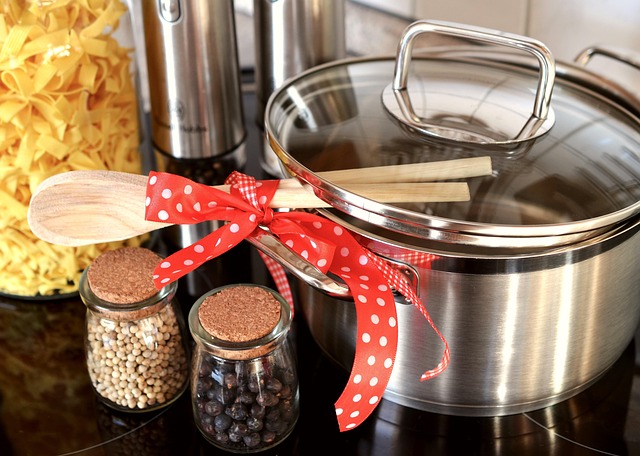
In today’s fast-paced world, finding time to prepare nutritious and delicious meals for your family can be a daunting task. Juggling work, school, and extracurricular activities often leaves little room for culinary creativity. However, with a little organization and planning, meal prepping can become a family-friendly endeavor that saves time, reduces stress, and ensures your loved ones are well-nourished. This ultimate guide will equip busy parents with strategies to streamline meal preparation, offering tips and tricks for crafting healthy, balanced meals that can be enjoyed by all.
Understanding Meal Prep
Meal prepping involves preparing meals or meal components in advance, making it easier to put together healthy dishes throughout the week. This approach not only saves time but also helps manage portion sizes, reduces food waste, and promotes healthier eating habits by minimizing reliance on takeout or processed foods.
Benefits of Meal Prepping
- Time-saving: Spend less time in the kitchen by preparing meals in bulk.
- Cost-effective: Buying ingredients in bulk often reduces grocery bills.
- Healthier choices: Homemade meals allow for better control over ingredients.
- Reduced stress: Eliminate the daily “What’s for dinner?” dilemma.
- Environmental impact: Less food waste and packaging usage.
Getting Started with Meal Prep
Embarking on a meal prep journey can be daunting, but with the right tools and mindset, it becomes a manageable and even enjoyable task.
Essential Equipment
- Quality containers: Invest in reusable, microwave-safe containers of various sizes to store meals and ingredients.
- Sharp knives: A set of good-quality knives speeds up chopping and reduces the risk of accidents.
- Cutting boards: Keep separate boards for meat and vegetables to prevent cross-contamination.
- Blender or food processor: Ideal for making sauces, soups, and smoothies.
- Slow cooker or Instant Pot: These appliances are perfect for preparing large quantities with minimal effort.
Planning Your Meals
Begin by creating a weekly meal plan. Consider the family’s preferences, dietary restrictions, and activities scheduled for the week. This will guide your grocery shopping and ensure you have all the necessary ingredients.
- Choose a variety of dishes: Rotate between proteins, grains, and vegetables to keep meals exciting.
- Balance nutrition: Aim for a mix of carbohydrates, proteins, and healthy fats in each meal.
- Batch-cook staples: Prepare versatile ingredients like rice, quinoa, or roasted vegetables that can be used in multiple dishes.
- Include family favorites: Incorporate meals the whole family enjoys to reduce mealtime stress.
Meal Prep Strategies
With your plan in hand, it’s time to put it into action. These strategies will help you maximize efficiency and ensure your meal prep sessions are as productive as possible.
Prep in Stages
Break down the meal prep process into manageable stages, focusing on one aspect at a time. This could include:
- Chopping and slicing: Prepare all vegetables and proteins at once to streamline cooking later.
- Batch cooking: Cook large portions of proteins and grains that can be used in multiple meals.
- Assembling: Put together meal components like salads or snacks in advance.
Involve the Family
Turn meal prep into a family activity. Assign age-appropriate tasks to children, such as washing vegetables, measuring ingredients, or setting the table. This not only lightens your load but also teaches children valuable cooking skills and the importance of healthy eating.
Utilize Leftovers Creatively
Transform leftovers into new dishes to keep meals exciting. For example, roasted chicken can be used in salads, tacos, or sandwiches. Be creative and resourceful, and you’ll reduce food waste while keeping meals interesting.
Sample Meal Prep Plan
To illustrate, here’s a sample meal prep plan that can be adjusted according to your family’s preferences and dietary needs.
Breakfast
- Overnight oats: Prepare jars of oats, yogurt, and fruit for a quick and nutritious breakfast.
- Egg muffins: Bake eggs with vegetables and cheese in a muffin tin for easy grab-and-go breakfasts.
Lunch
- Mason jar salads: Layer ingredients in a jar, keeping dressing at the bottom to avoid sogginess.
- Wraps and sandwiches: Prepare fillings in advance and assemble fresh each morning.
Dinner
- Stir-fry: Cook a large batch of mixed vegetables and protein to serve with rice or noodles.
- Casseroles: Prepare and freeze casseroles that can be baked as needed.
Snacks
- Fruit and nut mixes: Portion out servings of dried fruit and nuts for healthy snacks.
- Veggie sticks and hummus: Pre-cut veggies and store with hummus for easy snacking.
Storing and Reheating Tips
Proper storage and reheating are crucial to maintaining the quality and safety of prepped meals.
Storage
- Use airtight containers: This prevents contamination and helps food stay fresh longer.
- Label containers: Include the date to keep track of freshness.
- Freeze when necessary: Extend the life of meals by freezing portions you won’t consume within a few days.
Reheating
- Microwave: Reheat food evenly by stirring halfway through the process.
- Oven: Use for dishes that need a crispy texture, like casseroles.
- Stovetop: Ideal for soups and stir-fries to maintain texture and flavor.
Conclusion
Meal prepping is a powerful tool for busy parents aiming to provide healthy, delicious meals for their families. By investing a little time upfront, you can reap the benefits of reduced stress, improved nutrition, and more quality time with your loved ones. Remember, the key to successful meal prepping is flexibility and finding a routine that works for you and your family. Start small, involve your family, and soon meal prep will become a cherished part of your weekly routine.
#ChatGPT assisted in the creation of this article.







